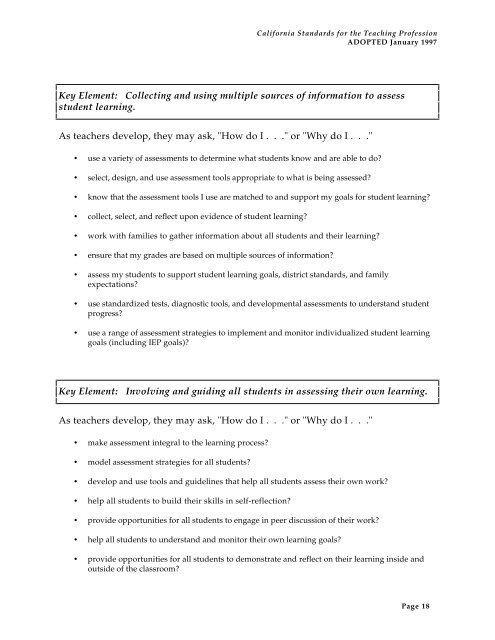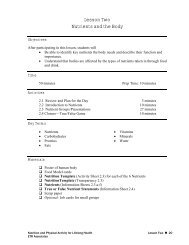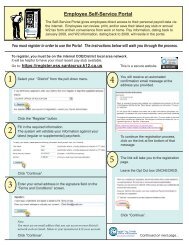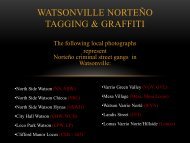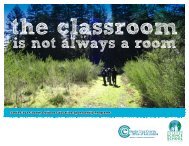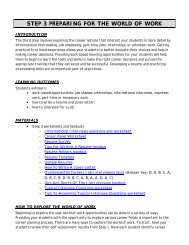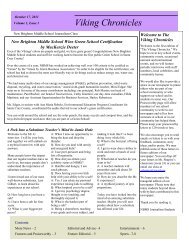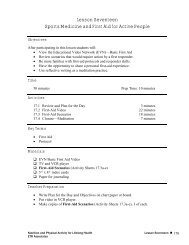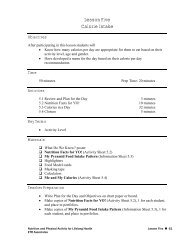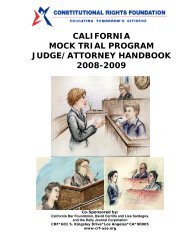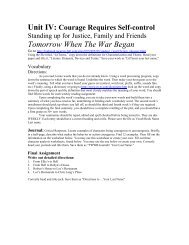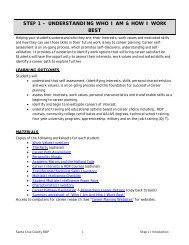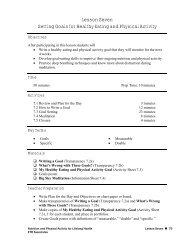California Standards for the Teaching Profession - Commission on ...
California Standards for the Teaching Profession - Commission on ...
California Standards for the Teaching Profession - Commission on ...
Create successful ePaper yourself
Turn your PDF publications into a flip-book with our unique Google optimized e-Paper software.
<str<strong>on</strong>g>Cali<str<strong>on</strong>g>for</str<strong>on</strong>g>nia</str<strong>on</strong>g> <str<strong>on</strong>g>Standards</str<strong>on</strong>g> <str<strong>on</strong>g>for</str<strong>on</strong>g> <str<strong>on</strong>g>the</str<strong>on</strong>g> <str<strong>on</strong>g>Teaching</str<strong>on</strong>g> <str<strong>on</strong>g>Professi<strong>on</strong></str<strong>on</strong>g><br />
ADOPTED January 1997<br />
Key Element: Collecting and using multiple sources of in<str<strong>on</strong>g>for</str<strong>on</strong>g>mati<strong>on</strong> to assess<br />
student learning.<br />
As teachers develop, <str<strong>on</strong>g>the</str<strong>on</strong>g>y may ask, "How do I . . ." or "Why do I . . ."<br />
• use a variety of assessments to determine what students know and are able to do<br />
• select, design, and use assessment tools appropriate to what is being assessed<br />
• know that <str<strong>on</strong>g>the</str<strong>on</strong>g> assessment tools I use are matched to and support my goals <str<strong>on</strong>g>for</str<strong>on</strong>g> student learning<br />
• collect, select, and reflect up<strong>on</strong> evidence of student learning<br />
• work with families to ga<str<strong>on</strong>g>the</str<strong>on</strong>g>r in<str<strong>on</strong>g>for</str<strong>on</strong>g>mati<strong>on</strong> about all students and <str<strong>on</strong>g>the</str<strong>on</strong>g>ir learning<br />
• ensure that my grades are based <strong>on</strong> multiple sources of in<str<strong>on</strong>g>for</str<strong>on</strong>g>mati<strong>on</strong><br />
• assess my students to support student learning goals, district standards, and family<br />
expectati<strong>on</strong>s<br />
• use standardized tests, diagnostic tools, and developmental assessments to understand student<br />
progress<br />
• use a range of assessment strategies to implement and m<strong>on</strong>itor individualized student learning<br />
goals (including IEP goals)<br />
Key Element: Involving and guiding all students in assessing <str<strong>on</strong>g>the</str<strong>on</strong>g>ir own learning.<br />
As teachers develop, <str<strong>on</strong>g>the</str<strong>on</strong>g>y may ask, "How do I . . ." or "Why do I . . ."<br />
• make assessment integral to <str<strong>on</strong>g>the</str<strong>on</strong>g> learning process<br />
• model assessment strategies <str<strong>on</strong>g>for</str<strong>on</strong>g> all students<br />
• develop and use tools and guidelines that help all students assess <str<strong>on</strong>g>the</str<strong>on</strong>g>ir own work<br />
• help all students to build <str<strong>on</strong>g>the</str<strong>on</strong>g>ir skills in self-reflecti<strong>on</strong><br />
• provide opportunities <str<strong>on</strong>g>for</str<strong>on</strong>g> all students to engage in peer discussi<strong>on</strong> of <str<strong>on</strong>g>the</str<strong>on</strong>g>ir work<br />
• help all students to understand and m<strong>on</strong>itor <str<strong>on</strong>g>the</str<strong>on</strong>g>ir own learning goals<br />
• provide opportunities <str<strong>on</strong>g>for</str<strong>on</strong>g> all students to dem<strong>on</strong>strate and reflect <strong>on</strong> <str<strong>on</strong>g>the</str<strong>on</strong>g>ir learning inside and<br />
outside of <str<strong>on</strong>g>the</str<strong>on</strong>g> classroom<br />
Page 18


